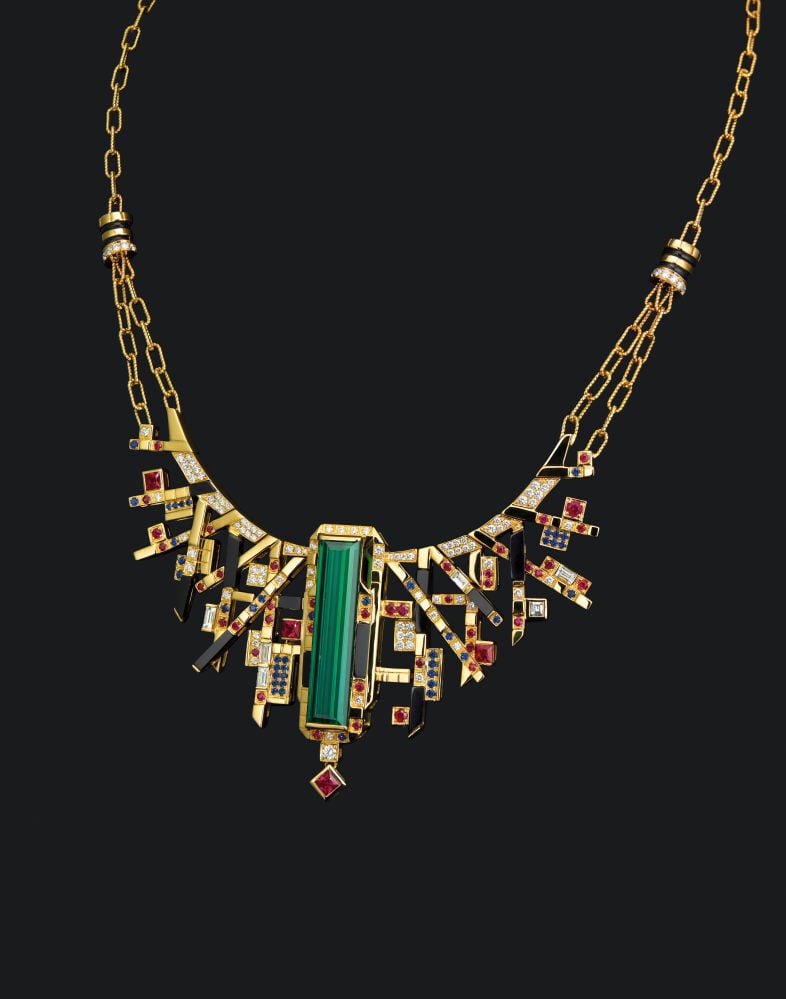Why do Queen Elizabeth and other royals love semi-precious stones? Cartier created bespoke pieces for Wallis Simpson while the British monarch wore red spinels and aquamarines

Another famous parure in the UK’s Crown Jewels is the queen’s Brazilian Aquamarines – comprising a tiara, necklace, earrings and bracelet. As gifts to mark the queen’s coronation in 1953, the president of Brazil presented her with a platinum necklace set with nine perfectly matched, large oblong aquamarine stones surrounded by diamonds, along with aquamarine earrings. Later, Brazil also gave the queen a matching aquamarine and diamond bracelet.

The parure was completed with a tiara made by crown jeweller Garrard in the 1957. The present form of the tiara is the result of meticulous redesigning to incorporate four scroll-shape motifs from an aquamarine and diamond head jewel, also a gift from Brazil in the 1960s.
In Asia, connoisseurs of rare coloured gemstones have splurged on unique pieces. At the Christie’s Hong Kong Magnificent Jewels sale in May 2017, Adrian Cheng’s suite of multi-gem jewellery was snapped up for HK$250,000 (US$32,000). It consists of a necklace, bracelet and ring of matching design. The pieces feature angular geometric fringes with large green tourmaline stones, surrounded with bursts of onyx, circular-cut rubies, sapphires and diamonds. The necklace suspends a square-shaped ruby, joined by a similarly set openwork curved band and neck chain with diamond and onyx link details.

For instance, Chan’s multi-gem Pride brooch was sold for HK$1.02 million (estimates of HK$600,000-800,000). The butterfly brooch in titanium and gold is set with garnet and amethyst stones and accented with fancy coloured diamonds. The hammer price for Chan’s unique amethyst and diamond ear pendants was HK$900,000 (estimates: HK$400,000-600,000. Each amethyst drop-shape pendant is each masterfully set with a round diamond, suspended from triangular cabochon amethyst and diamond hoops in titanium.
Among the coloured gemstones other than the big three, Paraiba tourmalines from Brazil hold a strong appeal among upscale gem collectors in Asia, thanks to their attractive neon blue colour and rarity.

Ever since their emergence in the international market in the late 1980s, top-quality Paraiba tourmaline designs have been highly coveted. Vickie Sek, chairman, Jewellery Asia Pacific, Christie’s Hong Kong, believes the Brazilian Paraiba tourmalines are definitely the auction house’s rising star, given the strong results they fetched in recent seasons.
A world record price for Paraiba tourmaline design was set at the Christie’s Hong Kong Magnificent Jewels auction in May 2018. Diamond earrings with two perfectly matched pear-shaped Paraiba tourmaline stones, weighing around 7.46ct and 6.81ct respectively, were bought for HK$21.7 million (estimates: HK$12.8 million-18 million).
As the finest grade of Paraiba tourmaline jewellery is rarely on offer at auction, a Paraiba tourmaline, purple sapphire and diamond ring, signed “monture Van Cleef & Arpels”, made an appearance at the Sotheby’s Magnificent Jewels and Noble Jewels: Part 1 sale in Geneva this month. The ring’s centre stone is a stunning 16.03ct oval briolette Paraiba tourmaline.
Want more stories like this? Sign up here. Follow STYLE on Facebook, Instagram, YouTube and Twitter.

- Semi-precious stones include tourmaline, spinel, garnet, amethyst, peridot, alexandrite, topaz and tanzanite – and European royals love them
- In Asia, pieces by contemporary designers like Wallace Chan do well at auctions, fetching thousands at Christie’s and Sotheby’s